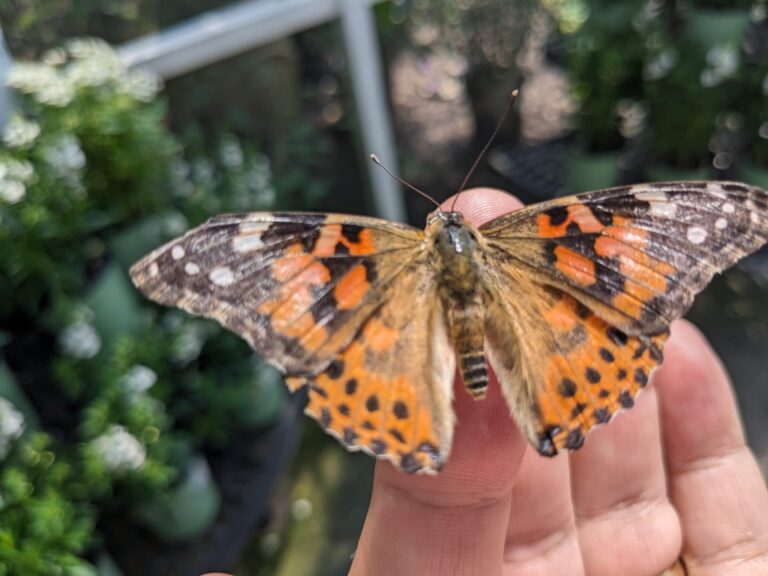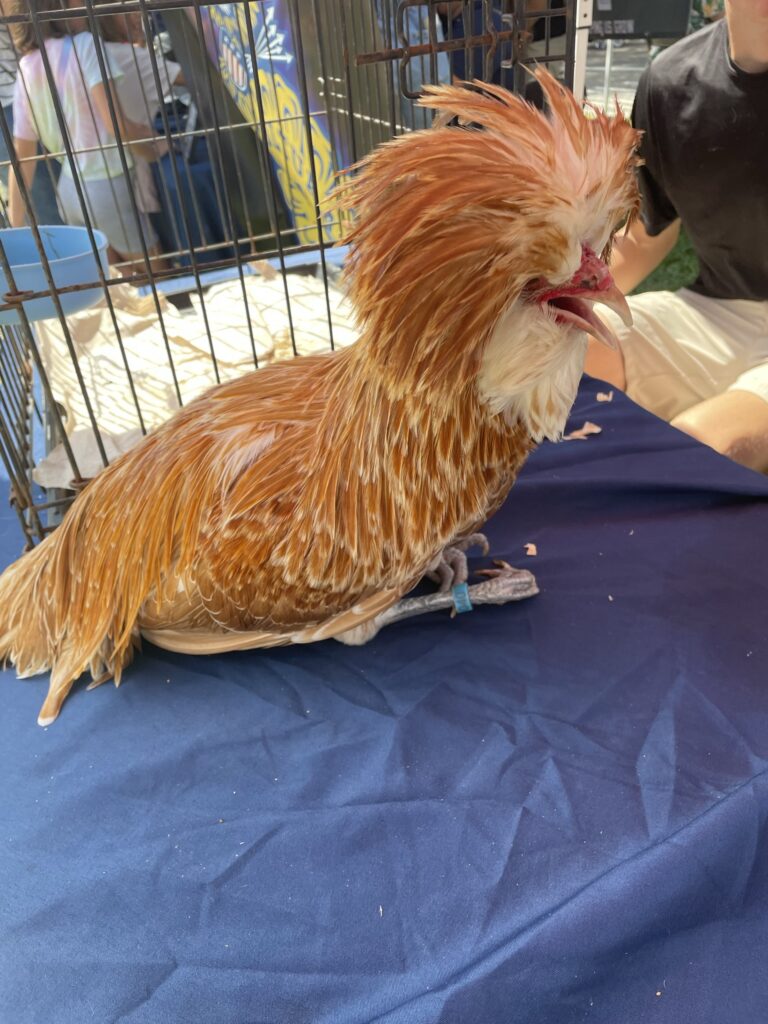“Canaries as Companion Birds: A Comprehensive Guide to Choosing, Caring, and Enjoying Your Feathered Friend”
Getting a canary as a pet can be a delightful experience. Canaries are small, colorful birds known for their beautiful songs and vibrant plumage. When it comes to choosing a canary as a pet, you’ll find a fascinating array of options, each offering distinct colors, patterns, and temperaments. The diversity in canary breeds allows prospective owners to select a bird that not only aligns with their aesthetic preferences but also fits their personality and lifestyle. Here’s an expanded look at some common types of canaries and what makes them unique:
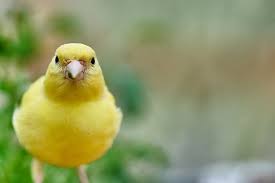
American Singer Canary: The American Singer Canary is renowned for its melodious and intricate songs. These canaries are bred for their vocal abilities rather than their appearance, making them a top choice for enthusiasts who enjoy the serenade of a talented songster. These birds come in various colors, including yellow, white, and variegated.
Colorbred Canary: Colorbred Canaries, as the name suggests, are primarily bred for their vibrant plumage. They are available in an astonishing spectrum of colors and patterns, from fiery reds and sunny yellows to striking greens and blues. These birds are a visual feast and can turn a canary cage into a living work of art.
Border Fancy Canary: Border Fancy Canaries are renowned for their elegant and distinctive feather markings. They have a characteristic narrow border or “cap” of color on their head, which contrasts with the color of the rest of their plumage. The precise breeding and selection of these patterns have made them popular among canary fanciers.
Fife Fancy Canary: Fife Fancy Canaries are compact and charming birds known for their cheerful disposition. They come in a variety of colors and exhibit a more rounded appearance compared to other canary breeds. Fife Fancy Canaries are ideal for individuals seeking a small, friendly companion bird.
Gloster Canary: Gloster Canaries, often called “The Parrot of Canaries,” are instantly recognizable due to their distinctive crests that resemble those of parrots. These crests come in various forms, such as the “corona” (circular) or “consort” (flattened) styles. Glosters are known for their lively and inquisitive personalities.
Norwich Canary: Norwich Canaries are characterized by their strong, stocky build and rounded heads. They are available in a variety of colors and are prized for their cheerful and active nature. Norwich Canaries are excellent pets for those who enjoy watching active and playful birds.
Yorkshire Canary: Yorkshire Canaries are the giants of the canary world, known for their large size and stately appearance. They have a regal bearing and are available in a range of colors. While they may not be as agile as smaller canary breeds, they make up for it with their majestic presence.
Spanish Timbrado Canary: Spanish Timbrado Canaries are celebrated for their intricate and passionate songs. They are renowned for their ability to mimic natural sounds and exhibit a wide range of musical tones. These canaries are highly valued by those who appreciate their songbird qualities.

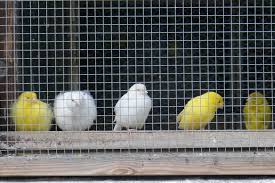
Housing for your canary should strike a balance between comfort and space. These birds are relatively small, so excessively large cages are unnecessary. However, they do require enough room to move around comfortably. It’s advisable to opt for a cage with horizontal bars, as canaries have a natural tendency to hop and flit from side to side. Inside the cage, ensure the presence of perches, toys for mental stimulation, and ample space for essential items like food bowls and a water dish.
Diet plays a pivotal role in your canary’s well-being. While their primary diet consists of seeds, a truly balanced diet should include a variety of fresh fruits and vegetables. Commercial canary seed mixes are readily available and serve as a staple. However, enrich their diet by offering fresh greens like kale, spinach, and broccoli, providing essential vitamins and nutrients. Remember to keep their water dish filled with fresh, clean water at all times.
The health of your canary demands regular attention. Vigilance is key – keep an eye out for any signs of illness, such as changes in behavior, labored breathing, or alterations in their droppings. As with all pets, routine veterinary check-ups are essential to ensure they remain in good health. A clean cage environment is also crucial in preventing disease, so make sure to maintain their living space meticulously.
While canaries are not known for their social nature with humans, they can become accustomed to your presence and enjoy observing household activity or listening to music. Alternatively, if you prefer a more social atmosphere for your canary, consider keeping them in pairs or small groups, as they can coexist amicably and provide companionship to one another.
Male canaries are often the preferred choice for pet owners who are captivated by the enchanting melodies of these little songbirds. The distinctive and melodious tunes produced by male canaries are indeed a remarkable feature that has endeared them to generations of bird enthusiasts. Here’s a closer look at what you should know about distinguishing a male canary from a female:
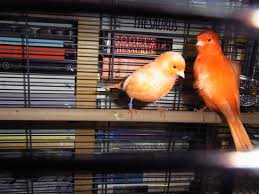
Singing Canaries
Male canaries are renowned for their singing prowess, and it’s their vocal abilities that frequently steal the spotlight. If you’re in search of a feathered friend whose melodies can brighten your day, then selecting a male canary is the way to go. The songs they create are a unique form of expression, with different breeds of canaries often having their signature tunes and variations. These melodious compositions can range from soft and soothing to vibrant and lively, filling your living space with a symphony of natural music. In contrast, female canaries typically do not sing with the same musicality and intensity as their male counterparts. While they may vocalize occasionally with softer chirps and calls, their songs are less intricate and melodic. Female canaries are more subdued in their vocalizations, focusing their energies on other aspects of their lives, such as foraging and nesting. If you decide to bring a male canary into your home, be prepared for their singing habits. Male canaries are known to be quite vocal, especially during certain times of the day. They often sing more enthusiastically in the morning and evening, creating a delightful wake-up call or a harmonious backdrop to your evening routine. While their songs are undoubtedly charming, it’s essential to consider whether you can accommodate their vocalizations in your living space, as their tunes can be quite loud and constant during these peak periods.
Identifying the gender of a canary can be a challenge, especially if they’re not in the mood for a song when you’re considering a purchase, perhaps from a pet store. Nonetheless, there are several physical and behavioral cues that may assist you in distinguishing the gender of these delightful birds. In some canary breeds, males and females may exhibit subtle differences in their plumage and body size. For instance, among certain varieties, males tend to showcase brighter and more vivid colors, particularly during the breeding season. They might also be marginally larger and boast a more robust physique compared to their female counterparts. However, these distinctions may not always be apparent, particularly when dealing with young birds. Observing behavioral signs can be an insightful strategy, even if the canary isn’t singing at the moment. Males typically exhibit a livelier and more active demeanor, while females often appear more reserved. Additionally, males may engage in courtship behaviors, such as singing and fluttering their wings, especially when in the presence of a female. If you require absolute certainty regarding a canary’s gender, seeking advice from an avian veterinarian or a knowledgeable breeder with expertise in canaries can be a prudent course of action.
Handling canaries requires a delicate touch and a keen understanding of their temperament. These small and graceful birds are indeed a joy to behold, but it’s essential to recognize that they are more suited for visual and auditory enjoyment rather than being handled extensively. Canaries are known for their delicate constitutions, both physically and emotionally. Excessive handling can lead to stress and harm for these little songsters. Their bones are fragile, and their tiny bodies are not built for the same level of physical interaction as some other pets, like dogs or cats. While it’s crucial to provide them with a safe and comfortable living environment, including an appropriately sized cage with perches and toys, canaries are generally not inclined to be cuddled or held. They may become stressed or frightened if handled too frequently or too roughly, which can lead to health problems or behavioral issues.
Canaries are, in essence, creatures of observation. They derive immense pleasure from the world around them, from the visual stimulation of their surroundings to the auditory delight of their own songs and the sounds of the environment. Their beauty and melodies are best appreciated from a respectful distance, allowing them to thrive in an environment that minimizes unnecessary stress. That said, it’s not to suggest that canaries cannot form a bond with their human caregivers. Over time, they can become accustomed to your presence and may even exhibit friendly behaviors, like hopping around the cage when you’re nearby or engaging in interactive play with toys you provide. This is their way of acknowledging your companionship and expressing their contentment. In essence, when it comes to canaries, a gentle and hands-off approach is often the best approach. Respecting their natural disposition and allowing them to flourish in an environment that values their beauty and songs while minimizing unnecessary handling is the key to ensuring their well-being and happiness as cherished pets.
Owning a canary can be a rewarding experience if you appreciate their beautiful songs and colorful plumage. Canaries can live for an average of 7 to 10 years, although some may live longer with proper care. Ensure you have the time and commitment to care for them properly, as they can thrive when given the right environment and attention.



